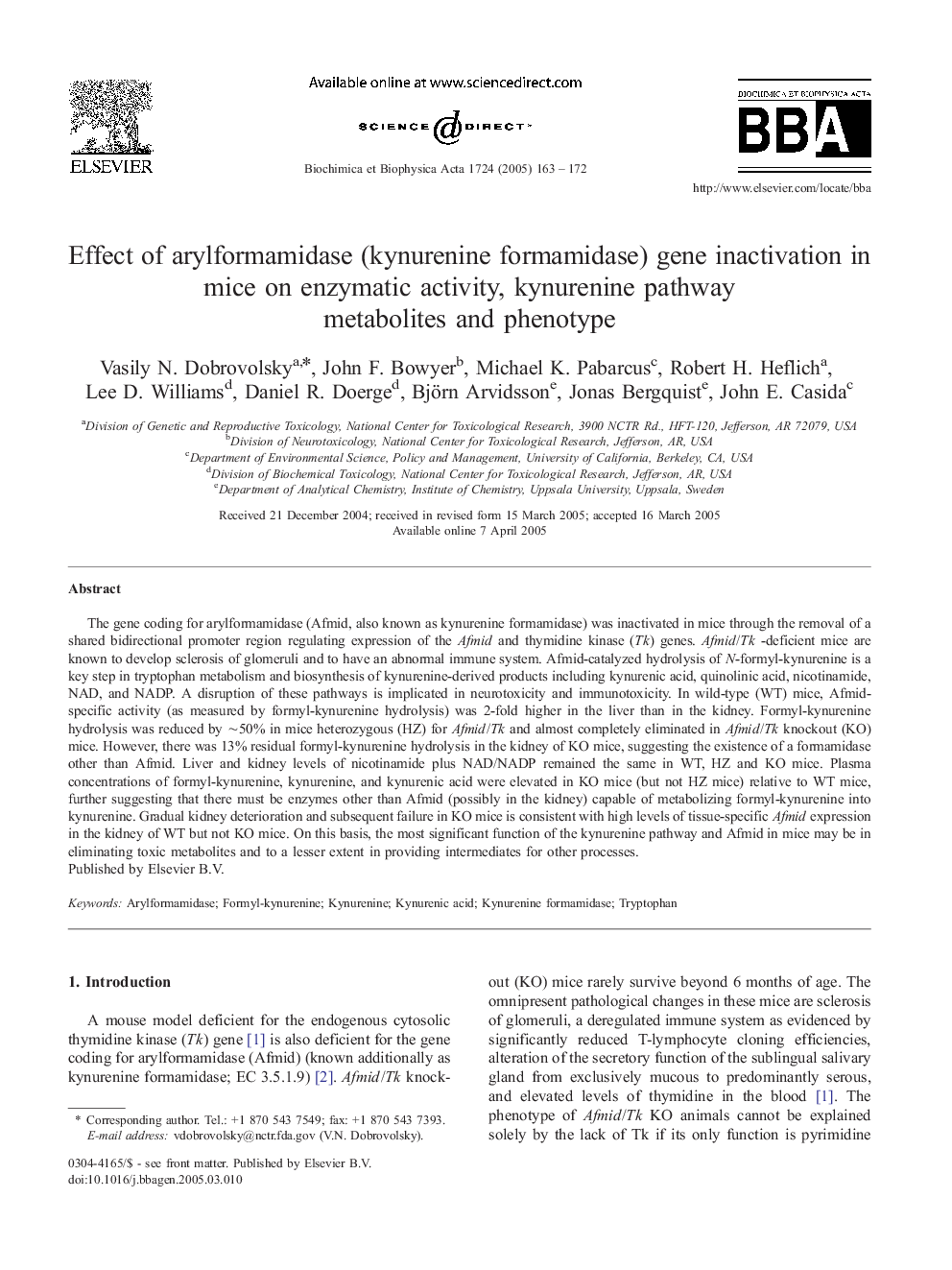| کد مقاله | کد نشریه | سال انتشار | مقاله انگلیسی | نسخه تمام متن |
|---|---|---|---|---|
| 9886106 | 1537495 | 2005 | 10 صفحه PDF | دانلود رایگان |
عنوان انگلیسی مقاله ISI
Effect of arylformamidase (kynurenine formamidase) gene inactivation in mice on enzymatic activity, kynurenine pathway metabolites and phenotype
دانلود مقاله + سفارش ترجمه
دانلود مقاله ISI انگلیسی
رایگان برای ایرانیان
کلمات کلیدی
موضوعات مرتبط
علوم زیستی و بیوفناوری
بیوشیمی، ژنتیک و زیست شناسی مولکولی
زیست شیمی
پیش نمایش صفحه اول مقاله

چکیده انگلیسی
The gene coding for arylformamidase (Afmid, also known as kynurenine formamidase) was inactivated in mice through the removal of a shared bidirectional promoter region regulating expression of the Afmid and thymidine kinase (Tk) genes. Afmid/Tk -deficient mice are known to develop sclerosis of glomeruli and to have an abnormal immune system. Afmid-catalyzed hydrolysis of N-formyl-kynurenine is a key step in tryptophan metabolism and biosynthesis of kynurenine-derived products including kynurenic acid, quinolinic acid, nicotinamide, NAD, and NADP. A disruption of these pathways is implicated in neurotoxicity and immunotoxicity. In wild-type (WT) mice, Afmid-specific activity (as measured by formyl-kynurenine hydrolysis) was 2-fold higher in the liver than in the kidney. Formyl-kynurenine hydrolysis was reduced by â¼50% in mice heterozygous (HZ) for Afmid/Tk and almost completely eliminated in Afmid/Tk knockout (KO) mice. However, there was 13% residual formyl-kynurenine hydrolysis in the kidney of KO mice, suggesting the existence of a formamidase other than Afmid. Liver and kidney levels of nicotinamide plus NAD/NADP remained the same in WT, HZ and KO mice. Plasma concentrations of formyl-kynurenine, kynurenine, and kynurenic acid were elevated in KO mice (but not HZ mice) relative to WT mice, further suggesting that there must be enzymes other than Afmid (possibly in the kidney) capable of metabolizing formyl-kynurenine into kynurenine. Gradual kidney deterioration and subsequent failure in KO mice is consistent with high levels of tissue-specific Afmid expression in the kidney of WT but not KO mice. On this basis, the most significant function of the kynurenine pathway and Afmid in mice may be in eliminating toxic metabolites and to a lesser extent in providing intermediates for other processes.
ناشر
Database: Elsevier - ScienceDirect (ساینس دایرکت)
Journal: Biochimica et Biophysica Acta (BBA) - General Subjects - Volume 1724, Issues 1â2, 20 June 2005, Pages 163-172
Journal: Biochimica et Biophysica Acta (BBA) - General Subjects - Volume 1724, Issues 1â2, 20 June 2005, Pages 163-172
نویسندگان
Vasily N. Dobrovolsky, John F. Bowyer, Michael K. Pabarcus, Robert H. Heflich, Lee D. Williams, Daniel R. Doerge, Björn Arvidsson, Jonas Bergquist, John E. Casida,